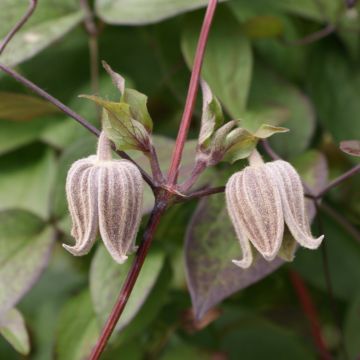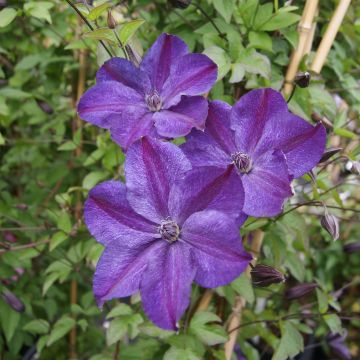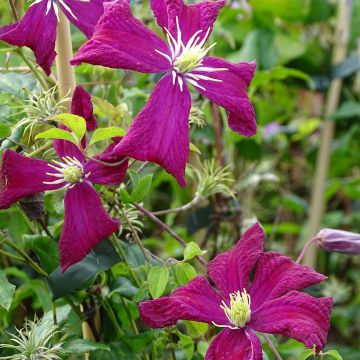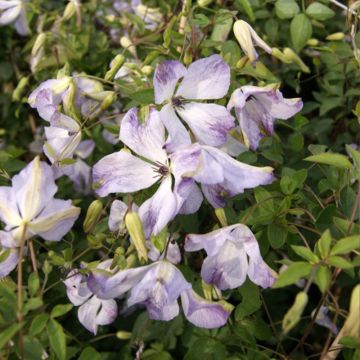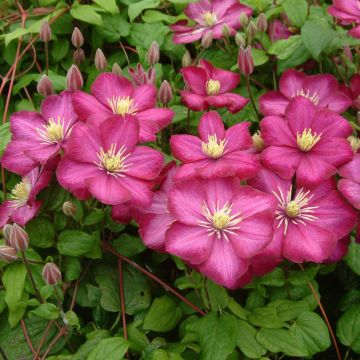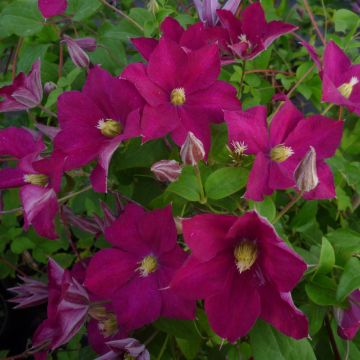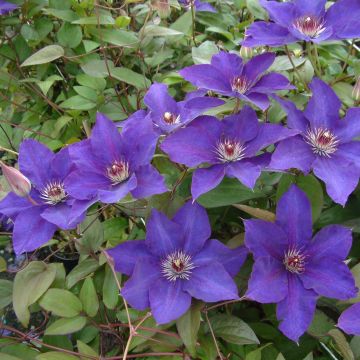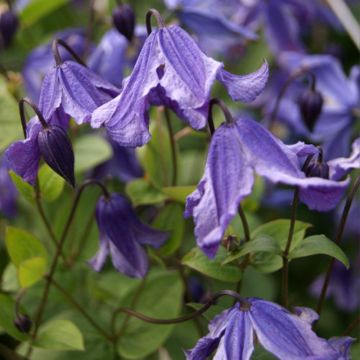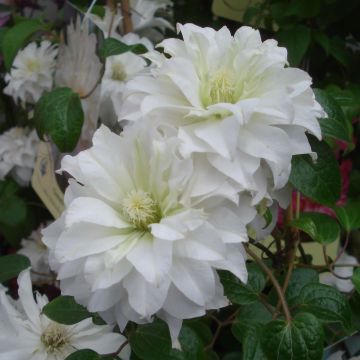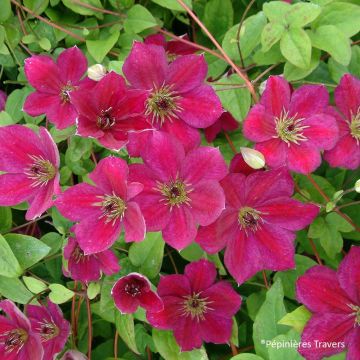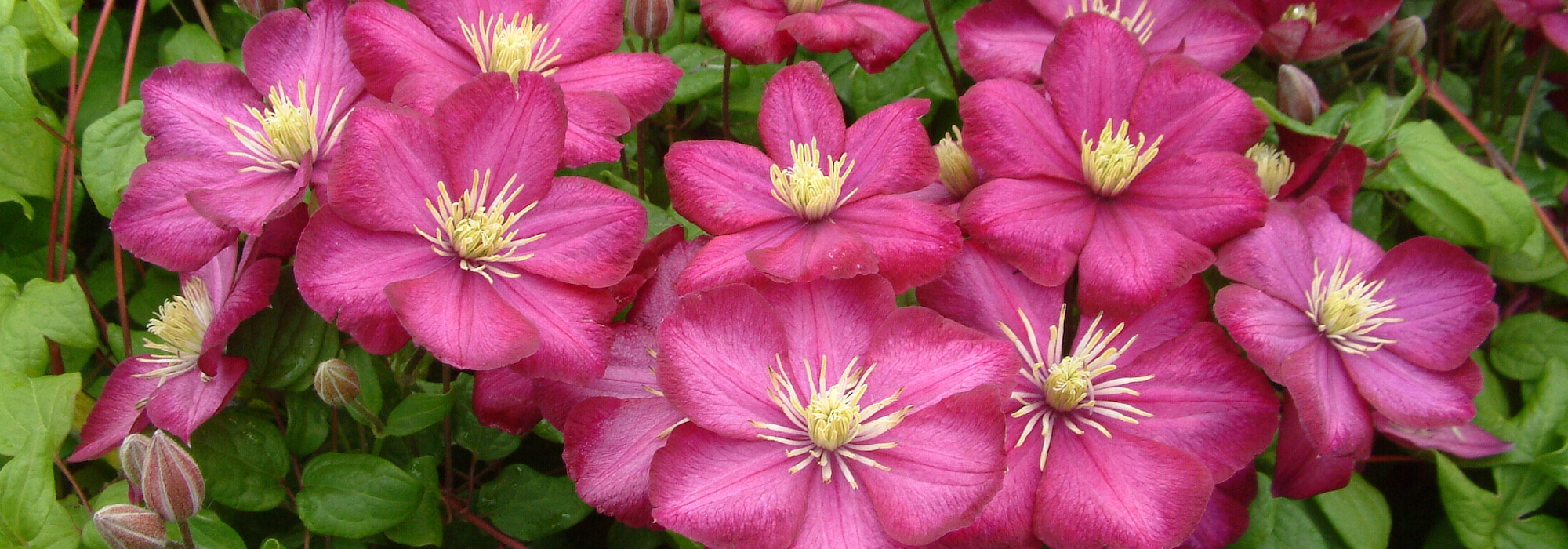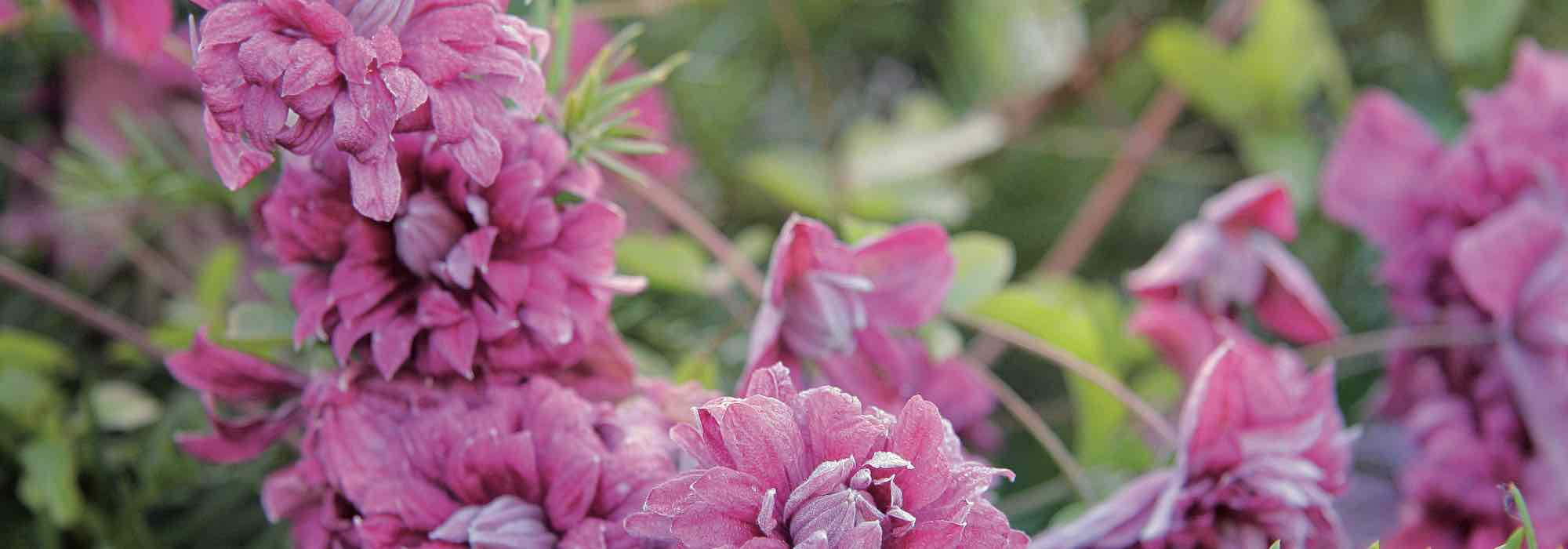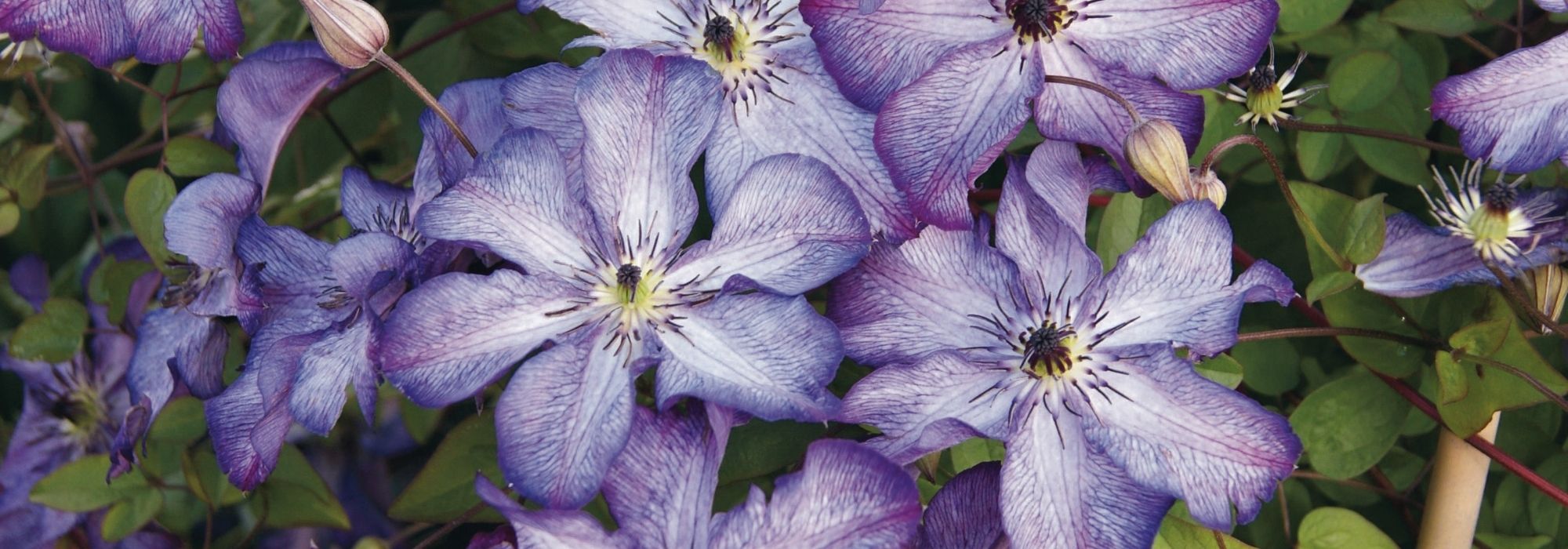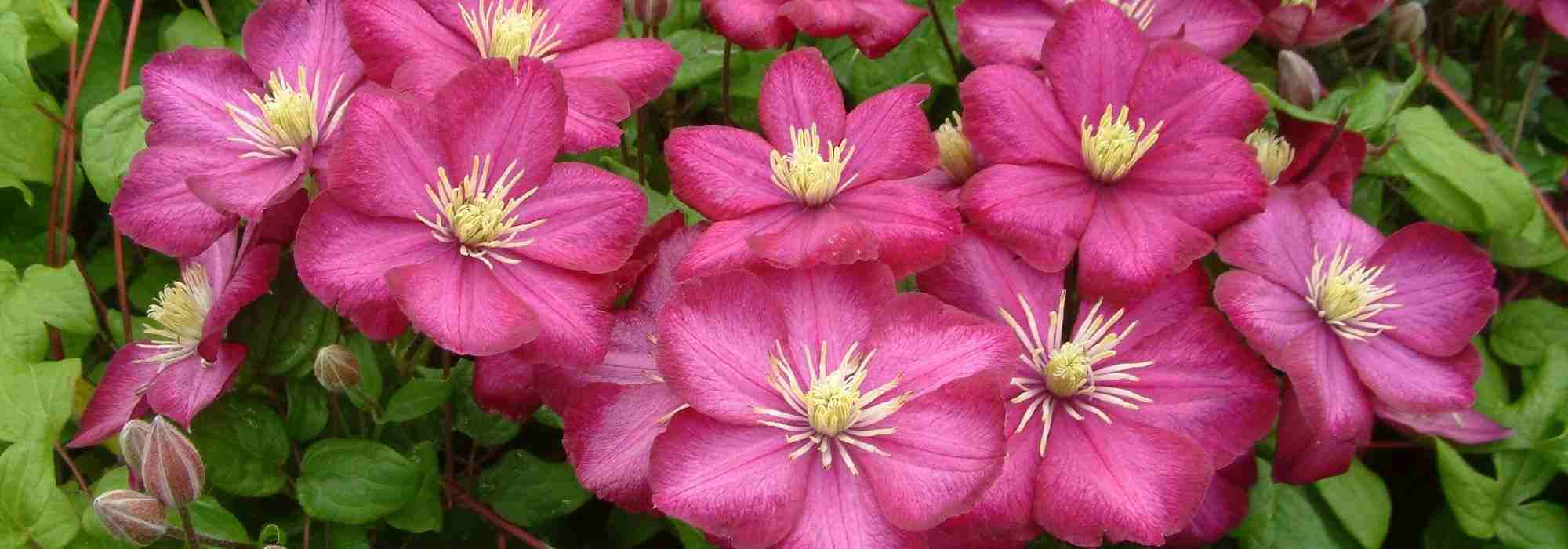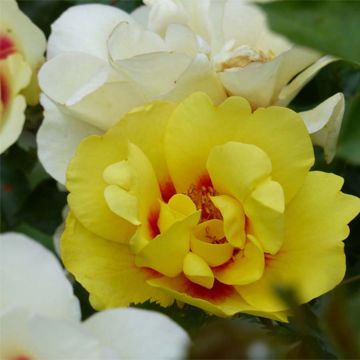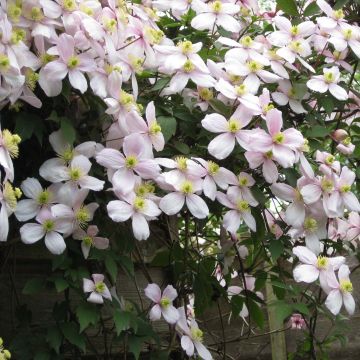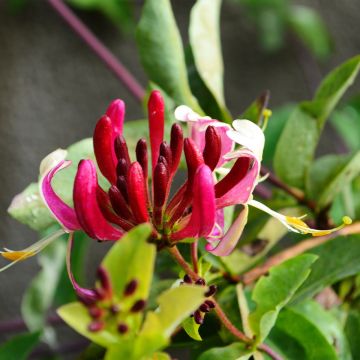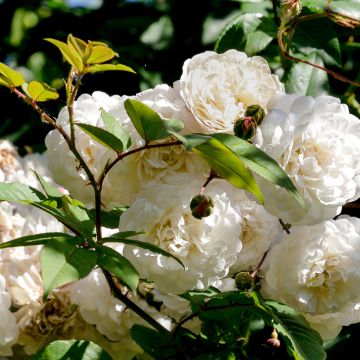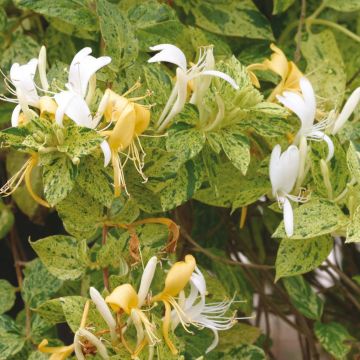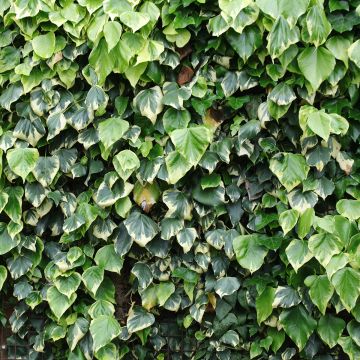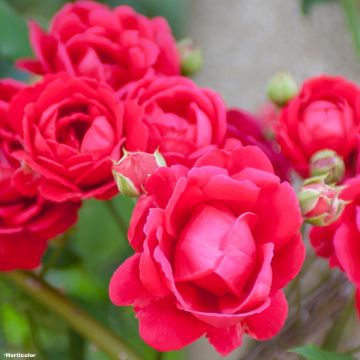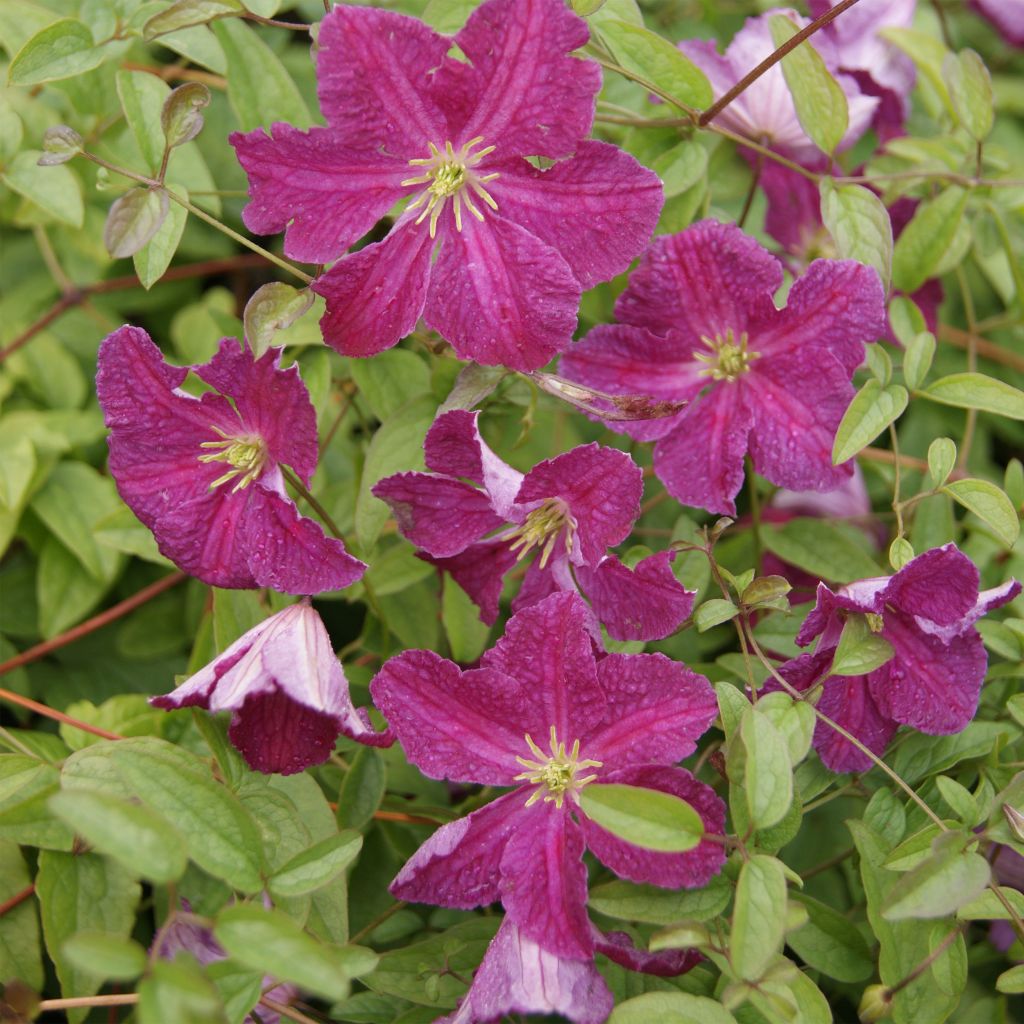

Clématite Abundance - Clematis viticella Abundance
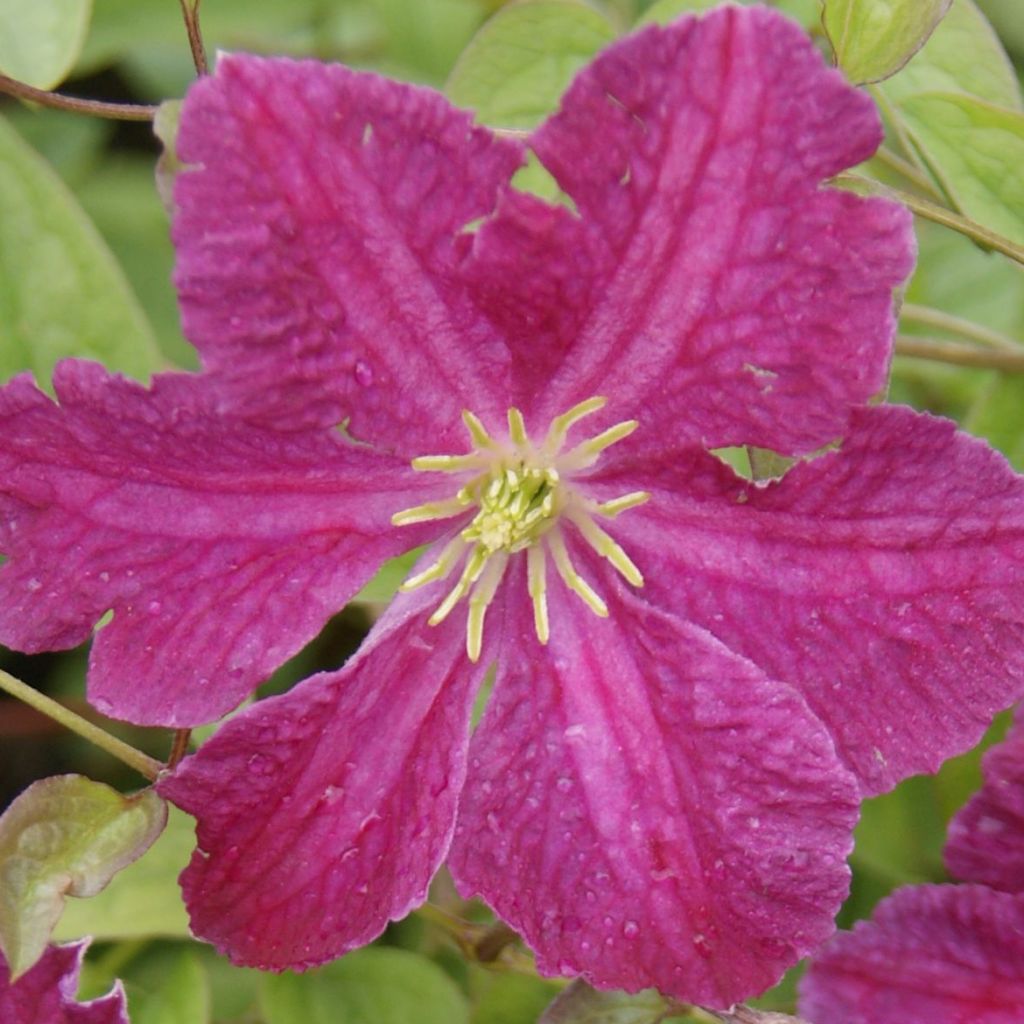

Clématite Abundance - Clematis viticella Abundance
View more pictures
Hide images
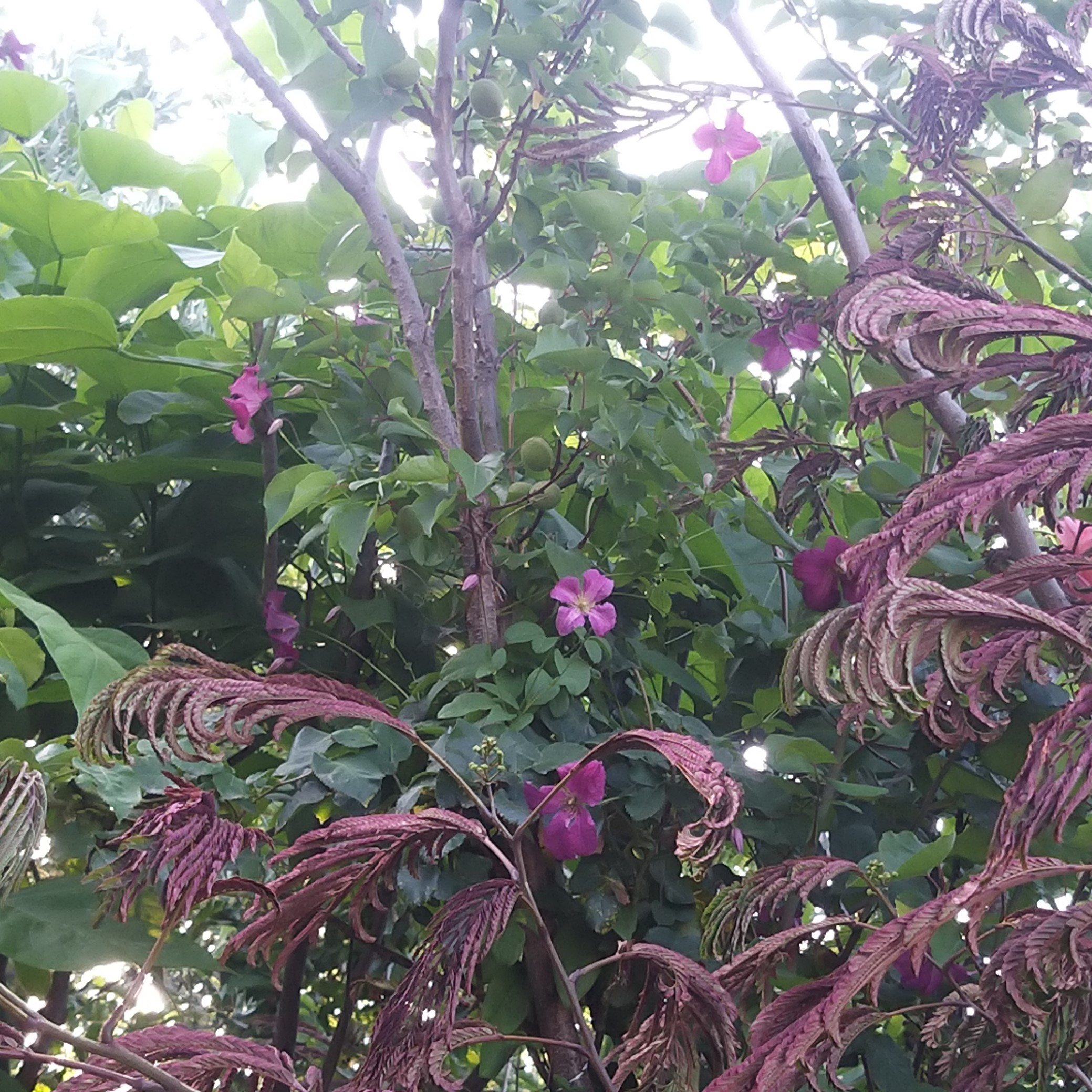
Thierry P.

N/A
Thierry P. • 84 FR
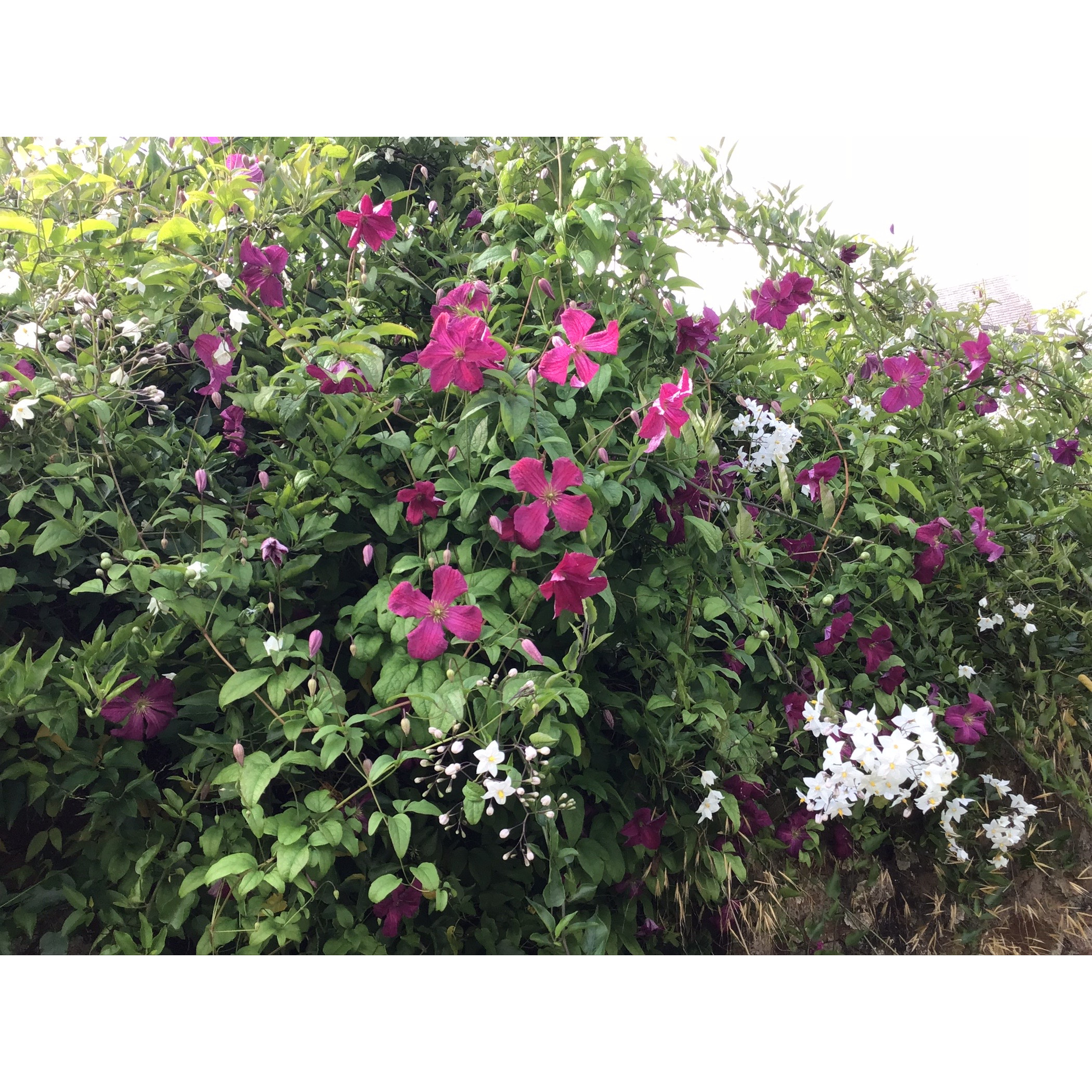
Claude B.

Clematis viticella abundance
Claude B. • 56 FR
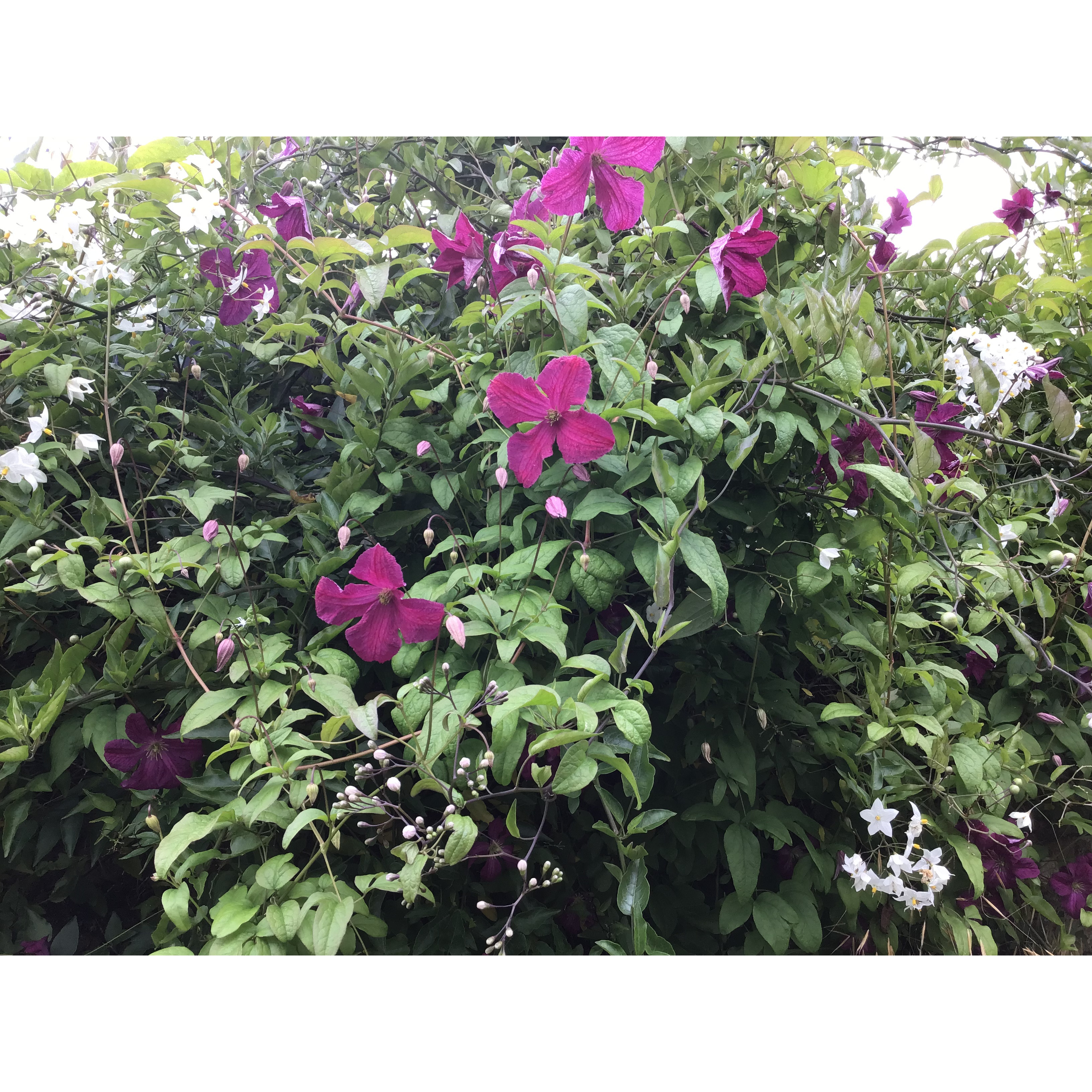
Claude B.

Clematis viticella abundance
Claude B. • 56 FR
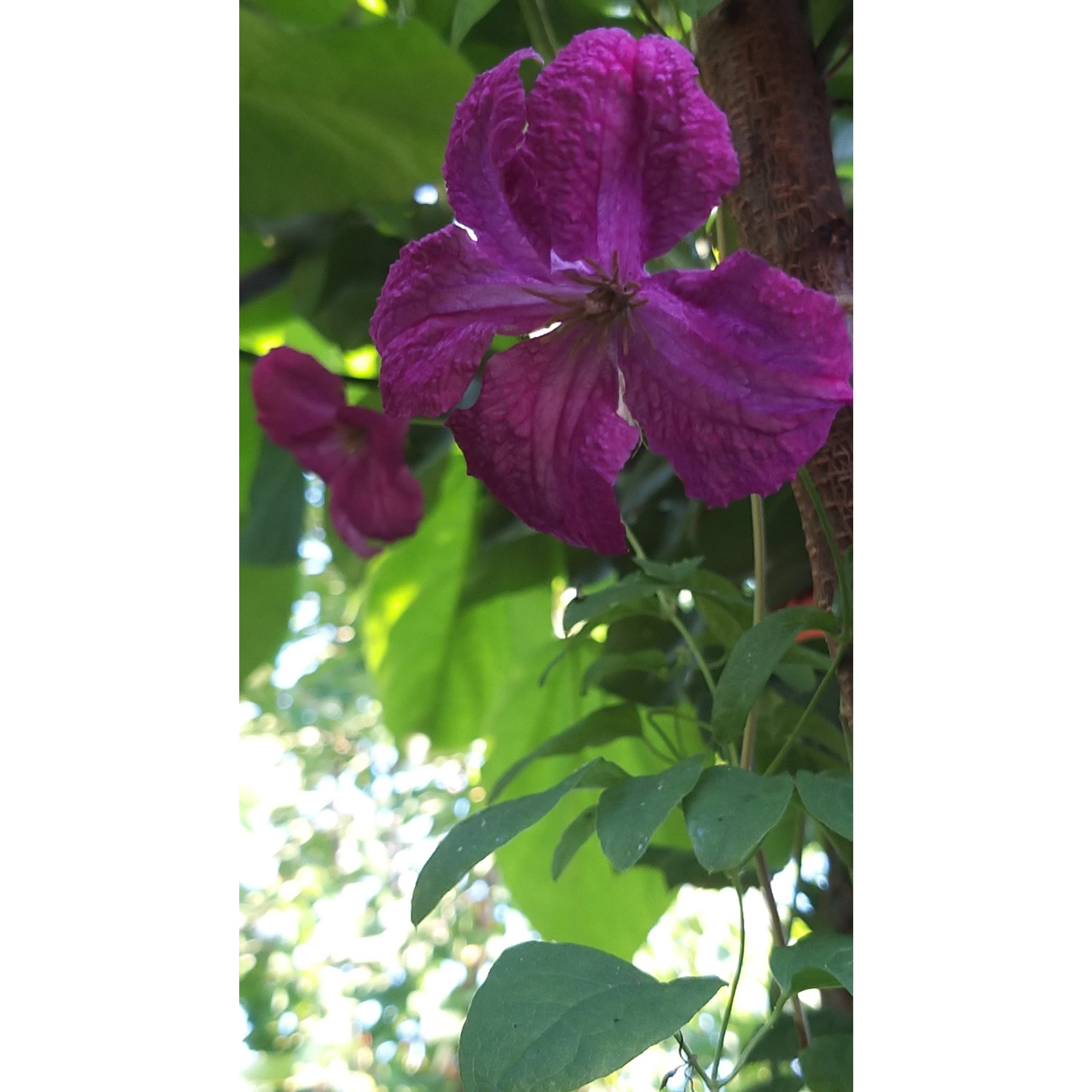
Thierry P.

June flowering - image 6
Thierry P. • 84 FR
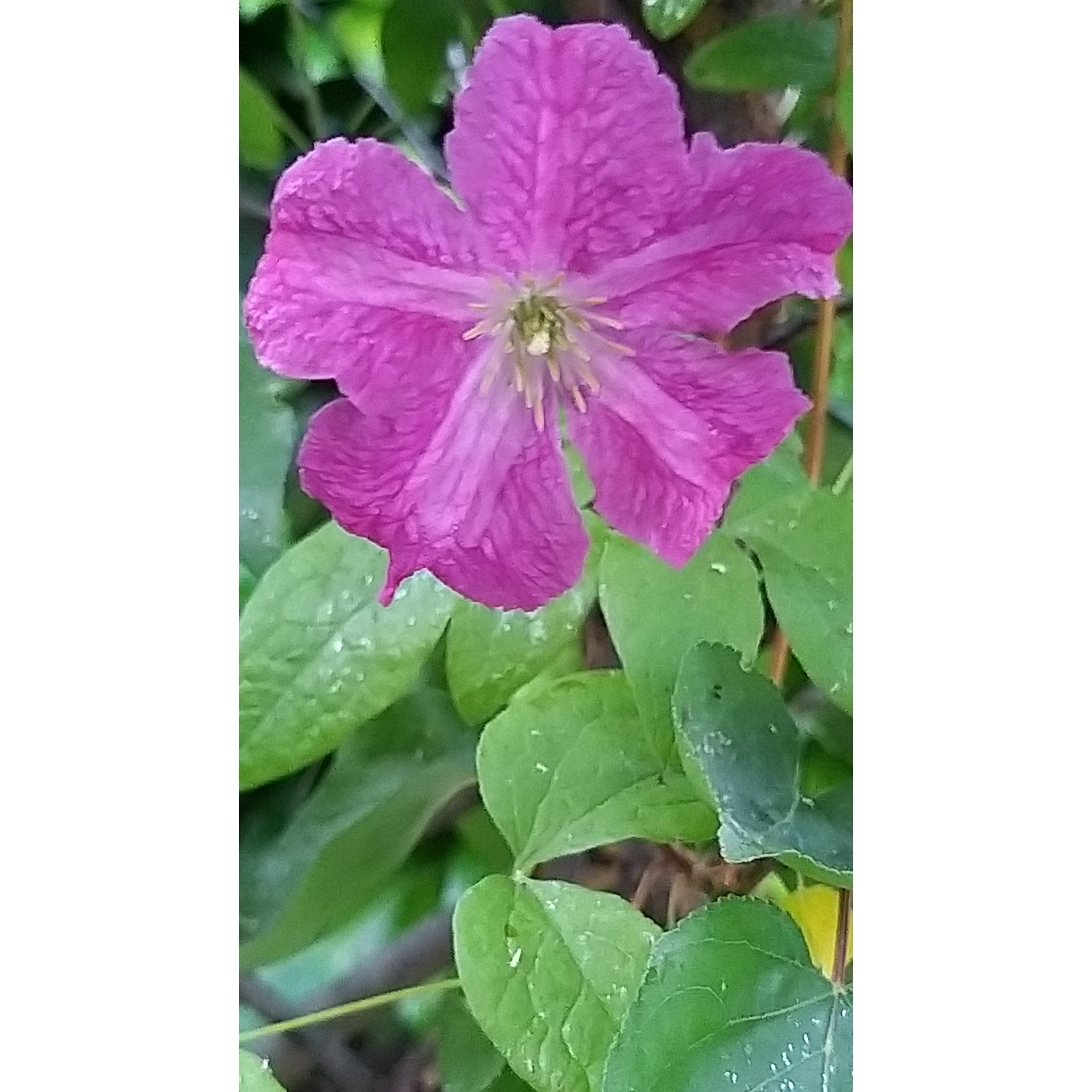
Thierry P.

June flowering - image 3
Thierry P. • 84 FR
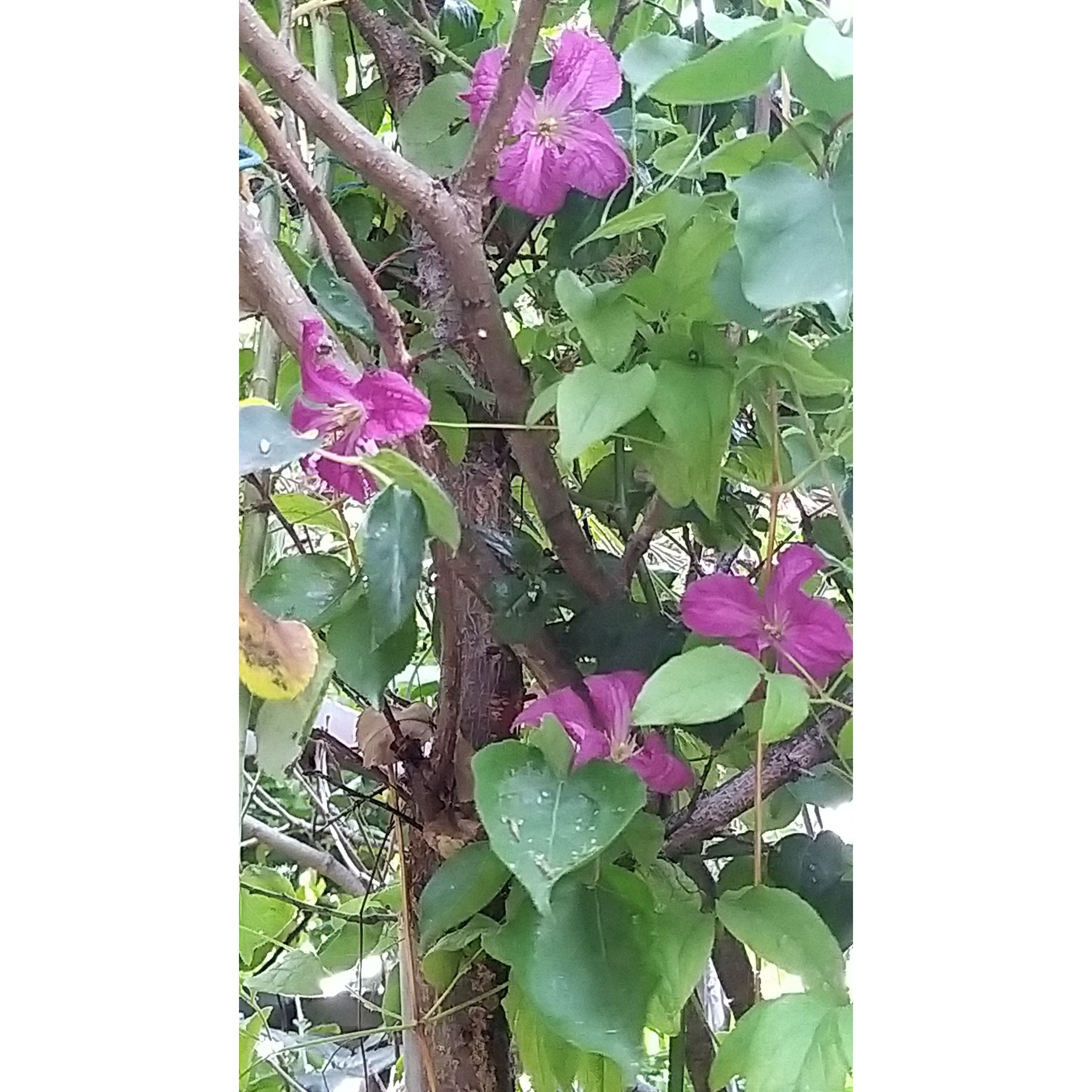
Thierry P.

June flowering - image 2
Thierry P. • 84 FR

Virginie L.

Virginie L. • 13 FR
Clematis Abundance
Clematis viticella Abundance
Italian Leather Flower, Purple Clematis, Virgin's Bower
Plant arrived in very good condition. Planted the same day, it seems to be thriving.
Franck, 24/05/2020
Special offer!
Receive a €20 voucher for any order over €90 (excluding delivery costs, credit notes, and plastic-free options)!
1- Add your favorite plants to your cart.
2- Once you have reached €90, confirm your order (you can even choose the delivery date!).
3- As soon as your order is shipped, you will receive an email containing your voucher code, valid for 3 months (90 days).
Your voucher is unique and can only be used once, for any order with a minimum value of €20, excluding delivery costs.
Can be combined with other current offers, non-divisible and non-refundable.
Home or relay delivery (depending on size and destination)
Schedule delivery date,
and select date in basket
This plant carries a 6 months recovery warranty
More information
We guarantee the quality of our plants for a full growing cycle, and will replace at our expense any plant that fails to recover under normal climatic and planting conditions.


Would this plant suit my garden?
Set up your Plantfit profile →
Description
Clematis 'Abundance' is a floriferous, vigorous, disease-resistant variety, not very sensitive to wind which produces a multitude of small single flowers in raspberry red with a greenish yellow heart during the summer, with deeply veined fuchsia tepals and a pink central band. A beautiful Clematis that will enhance any support in the garden, as well as the terrace or balcony when planted in a pot.
Clematis 'Abundance', belonging to the Ranunculaceae family, is a hybrid derived from Clematis viticella, which is part of the late-flowering group of Clematis that blooms on the current year's growth. Clematis attach themselves to their support using petioles that are transformed into tendrils. This magnificent Italian Clematis is a semi-woody climbing plant with deciduous foliage composed of light green pinnate leaves with slightly ponited leaflets. It grows rapidly and can reach a height of 2.5 to 3 metres (8 to 10 feet) with a spread of about 1 metre (3 feet). This splendid and highly floriferous variety lives up to its name, covered with a mass of single flowers with 4 or 6 tepals, measuring 5 to 7 cm (2 to 3in) in diameter, with wavy, slightly recurved edges. Its raspberry red flowers are deeply veined with fuchsia and have a lighter pink central band, which gives them a beautiful textured appearance. The contrast with a greenish-yellow stamen centre stands out beautifully against the foliage.
Clematis 'Abundance' was given the Award of Garden Merit by the Royal Horticultural Society in 2002, in recognition of its many qualities.
Summer-flowering Clematis are fantastic, easy-to-grow climbing plants (without ever being invasive or cumbersome) and can be showcased in countless ways. A must-have in English gardens, they will bring a romantic, natural, and wild touch to the garden and are perfect companions for climbing or rambling roses. They are ideal for adorning and enhancing walls, trellises, and pergolas, and bring unexpected bursts of colour when planted at the base of trees or within hedges. Clematis are also excellent candidates for container gardening, adding life to balconies, terraces, or patios. It is best to avoid very sunny locations, either in containers or in the ground. 'Abundance' will be stunning paired with a climbing or rambling rose, Acer negundo 'Flamingo', Pyracantha 'Sparkler', or Chinese Wisteria. Medium-height perennials such as Epimedium, Daylilies, Liriope, Artemisia, Heuchera, or a shrubby sage can provide shade at its base.
Clematis Abundance in pictures
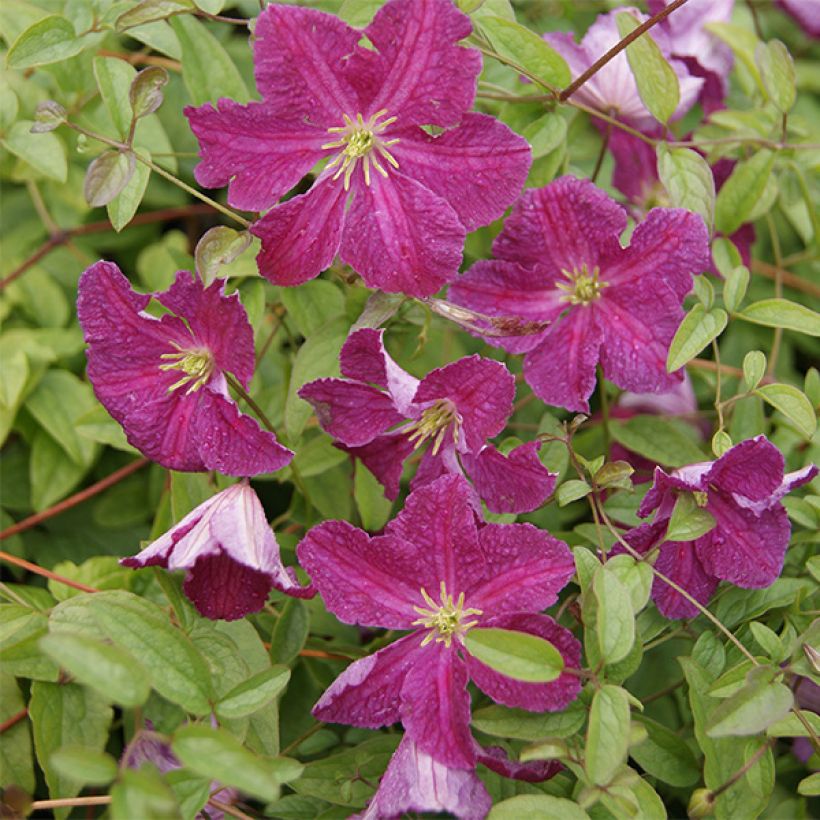

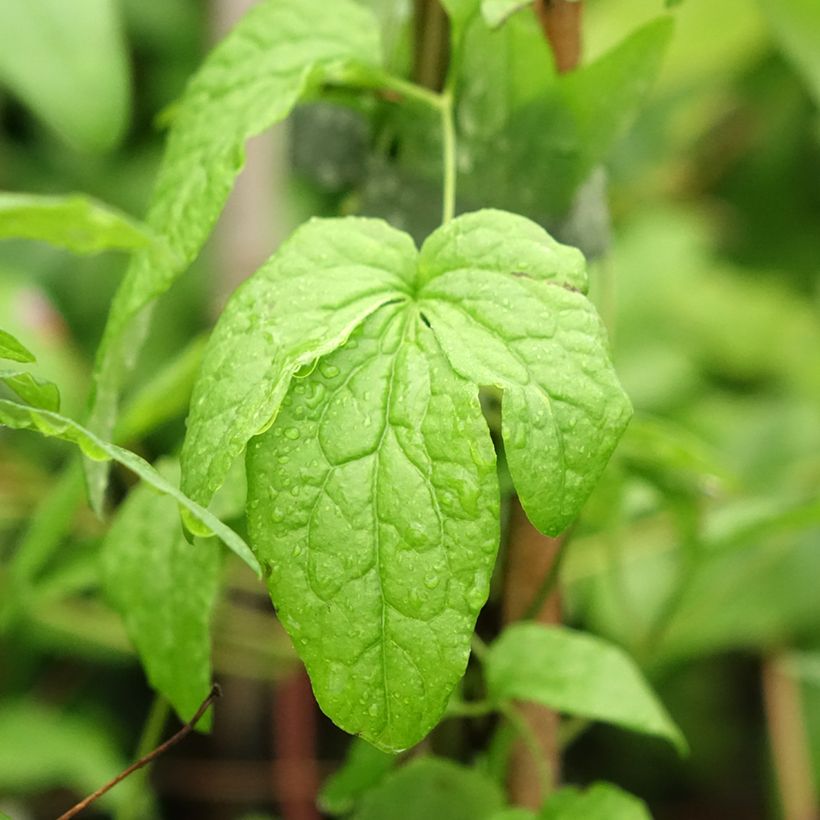

Plant habit
Flowering
Foliage
Botanical data
Clematis
viticella
Abundance
Renonculacées
Italian Leather Flower, Purple Clematis, Virgin's Bower
Cultivar or hybrid
Other Clematis Viticella
View all →Planting and care
Clematis 'Abundance' is a hardy, robust, disease-resistant variety that is less susceptible to wind, tolerating damage from moderate winds. It prefers a sunny to partially shaded exposure and fertile, humus-rich, moist, and well-drained soil. Clematis like to climb towards the sun, with their roots in the shade. The base of its stem and its roots must be in the shade. A tilted flat tile or a perennial or a low-growing bush planted in front of the Clematis will provide perfect protection against the sun, and conceal the crown. Be careful when handling the root ball as Clematis roots are quite fragile. Work the soil deeply and incorporate compost as well as a handful of bone meal, a base fertiliser that will help the Clematis to establish. During the first few weeks after planting, water regularly but moderately, without saturating, to keep the soil consistently moist. Clematis should be placed in the hole at an inclined position, with the stem angled towards the support it will climb on. Cover with soil in a small mound to cover the base and stem of the Clematis. This will reduce the risk of clematis wilt and promote the emergence of vigorous new shoots from the crown. After planting, prune the stems of summer-flowering Clematis to 30 cm (12in) or 40 cm (16in) above a healthy pair of buds. Train the stems without constricting them until the plant can grip onto the support using its tendrils. Mulch the Clematis in February with garden compost or well-rotted manure, avoiding direct contact with the stems.
Planting period
Intended location
Care
Planting & care advice
-
, onOrder confirmed
Reply from on Promesse de fleurs
Similar products
Haven't found what you were looking for?
Hardiness is the lowest winter temperature a plant can endure without suffering serious damage or even dying. However, hardiness is affected by location (a sheltered area, such as a patio), protection (winter cover) and soil type (hardiness is improved by well-drained soil).

Photo Sharing Terms & Conditions
In order to encourage gardeners to interact and share their experiences, Promesse de fleurs offers various media enabling content to be uploaded onto its Site - in particular via the ‘Photo sharing’ module.
The User agrees to refrain from:
- Posting any content that is illegal, prejudicial, insulting, racist, inciteful to hatred, revisionist, contrary to public decency, that infringes on privacy or on the privacy rights of third parties, in particular the publicity rights of persons and goods, intellectual property rights, or the right to privacy.
- Submitting content on behalf of a third party;
- Impersonate the identity of a third party and/or publish any personal information about a third party;
In general, the User undertakes to refrain from any unethical behaviour.
All Content (in particular text, comments, files, images, photos, videos, creative works, etc.), which may be subject to property or intellectual property rights, image or other private rights, shall remain the property of the User, subject to the limited rights granted by the terms of the licence granted by Promesse de fleurs as stated below. Users are at liberty to publish or not to publish such Content on the Site, notably via the ‘Photo Sharing’ facility, and accept that this Content shall be made public and freely accessible, notably on the Internet.
Users further acknowledge, undertake to have ,and guarantee that they hold all necessary rights and permissions to publish such material on the Site, in particular with regard to the legislation in force pertaining to any privacy, property, intellectual property, image, or contractual rights, or rights of any other nature. By publishing such Content on the Site, Users acknowledge accepting full liability as publishers of the Content within the meaning of the law, and grant Promesse de fleurs, free of charge, an inclusive, worldwide licence for the said Content for the entire duration of its publication, including all reproduction, representation, up/downloading, displaying, performing, transmission, and storage rights.
Users also grant permission for their name to be linked to the Content and accept that this link may not always be made available.
By engaging in posting material, Users consent to their Content becoming automatically accessible on the Internet, in particular on other sites and/or blogs and/or web pages of the Promesse de fleurs site, including in particular social pages and the Promesse de fleurs catalogue.
Users may secure the removal of entrusted content free of charge by issuing a simple request via our contact form.
The flowering period indicated on our website applies to countries and regions located in USDA zone 8 (France, the United Kingdom, Ireland, the Netherlands, etc.)
It will vary according to where you live:
- In zones 9 to 10 (Italy, Spain, Greece, etc.), flowering will occur about 2 to 4 weeks earlier.
- In zones 6 to 7 (Germany, Poland, Slovenia, and lower mountainous regions), flowering will be delayed by 2 to 3 weeks.
- In zone 5 (Central Europe, Scandinavia), blooming will be delayed by 3 to 5 weeks.
In temperate climates, pruning of spring-flowering shrubs (forsythia, spireas, etc.) should be done just after flowering.
Pruning of summer-flowering shrubs (Indian Lilac, Perovskia, etc.) can be done in winter or spring.
In cold regions as well as with frost-sensitive plants, avoid pruning too early when severe frosts may still occur.
The planting period indicated on our website applies to countries and regions located in USDA zone 8 (France, United Kingdom, Ireland, Netherlands).
It will vary according to where you live:
- In Mediterranean zones (Marseille, Madrid, Milan, etc.), autumn and winter are the best planting periods.
- In continental zones (Strasbourg, Munich, Vienna, etc.), delay planting by 2 to 3 weeks in spring and bring it forward by 2 to 4 weeks in autumn.
- In mountainous regions (the Alps, Pyrenees, Carpathians, etc.), it is best to plant in late spring (May-June) or late summer (August-September).
The harvesting period indicated on our website applies to countries and regions in USDA zone 8 (France, England, Ireland, the Netherlands).
In colder areas (Scandinavia, Poland, Austria...) fruit and vegetable harvests are likely to be delayed by 3-4 weeks.
In warmer areas (Italy, Spain, Greece, etc.), harvesting will probably take place earlier, depending on weather conditions.
The sowing periods indicated on our website apply to countries and regions within USDA Zone 8 (France, UK, Ireland, Netherlands).
In colder areas (Scandinavia, Poland, Austria...), delay any outdoor sowing by 3-4 weeks, or sow under glass.
In warmer climes (Italy, Spain, Greece, etc.), bring outdoor sowing forward by a few weeks.































